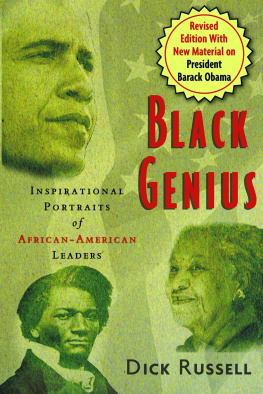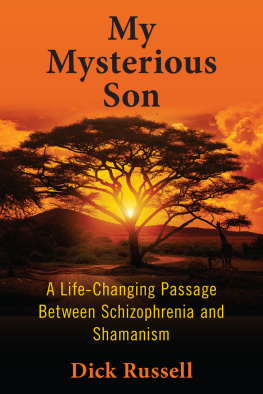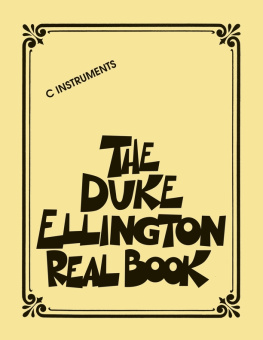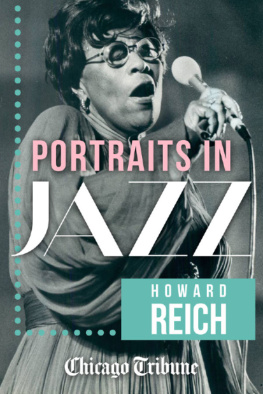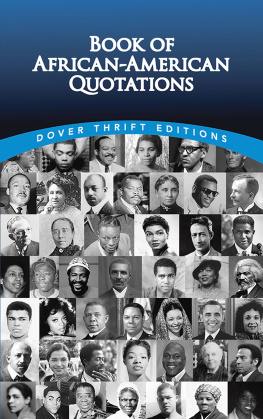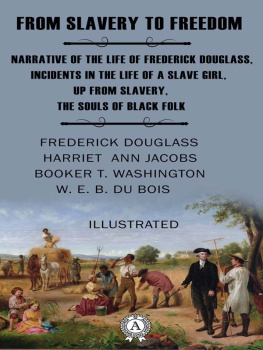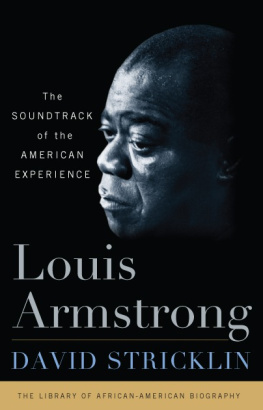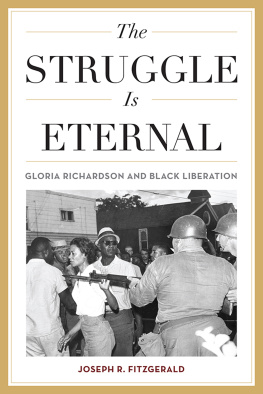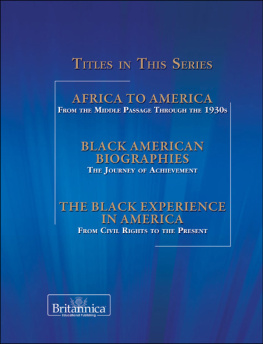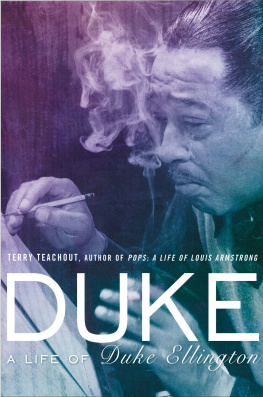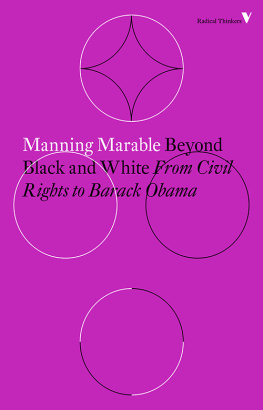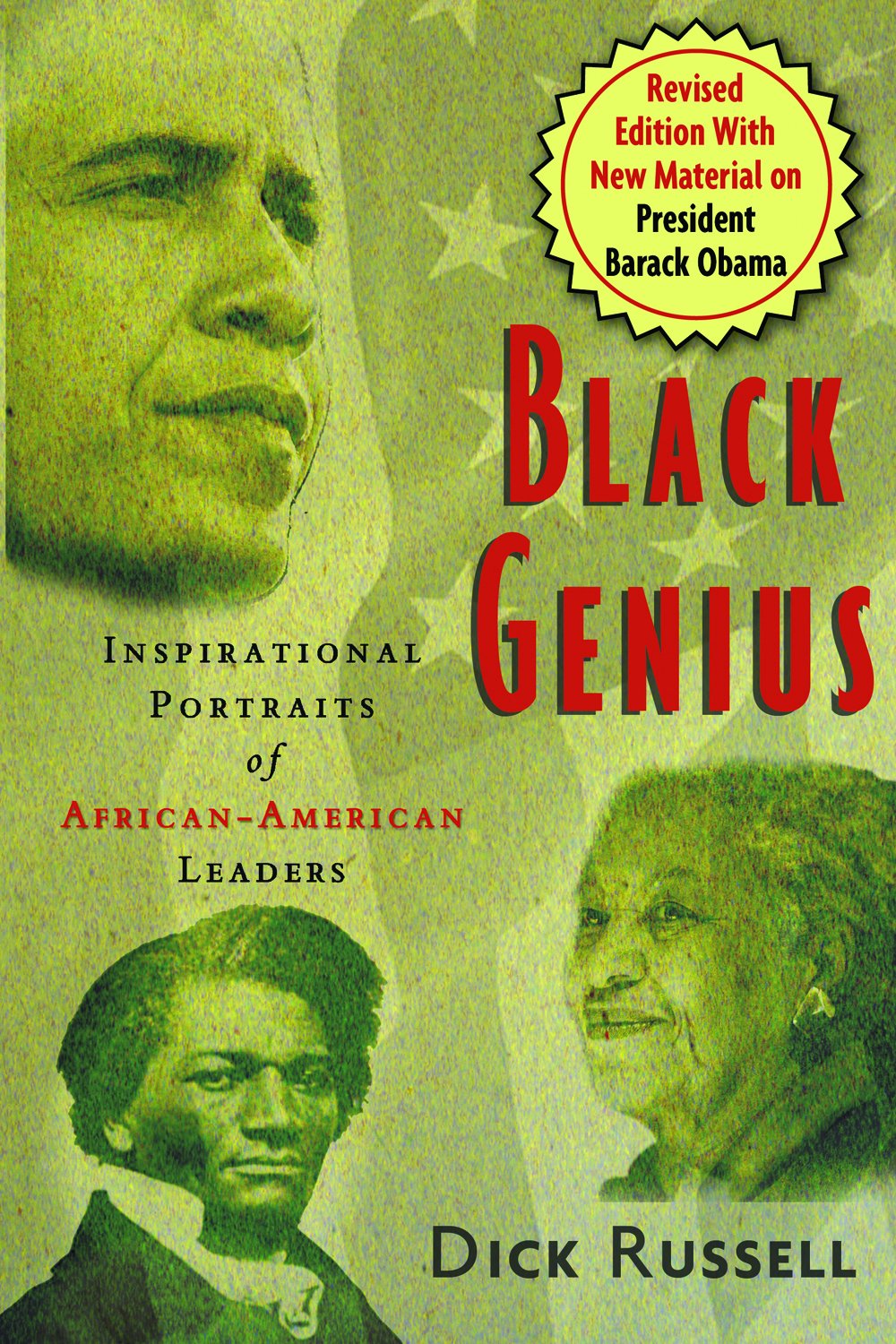Acknowledgments
This book has been a group effort in so many ways. It could not have been written without the help of dozens of people: offering advice on the structure, suggestions for the extremely difficult task of deciding whom to profile, editing and photographic assistance, and entree to others.
In the cases of most of the living individuals whom I chose to profile, I decided to send each of them a manuscript copy of the chapters where they appeared. In return, I received not only certain factual corrections and suggested new turns of phrase, but often invaluable additional material. My deepest thanks to the many people who took the time to help me better tell their stories and make their voices ring as true as I could.
Richard Newman, of Harvards W. E. B. Du Bois Institute, assisted greatly in the books conception and framework, as well as providing advice and encouragement as he read through a number of the chapters. My thanks also to his Institute colleagues, Andre Willis and Michael Vorenberg.
Especially helpful in critiquing my early chapters and encouraging my direction was my writer friend Ross Gelbspan. UMass/Amherst professor and author Michael Thelwells probing honesty proved invaluable when I was still grasping at straws, as well as his continuing support in reading several of the chapters. Albert Murray, while a primary subject in this book, also took the time to raise crucial questions about the overall content and gave me a number of wonderful photographs to include from his personal collection.
Also providing important thoughts for the books outline and difficult introductory chapter were: Edmund Barry Gaither of the National Center of Afro-American Artists; scholars Cornel West, Marilyn Richardson and Jean Humez; Boston Universitys Dr. Adelaide Cromwell; author Mel Watkins; James H. Cone of the Union Theological Seminary ; Massachusetts state representative Byron Rushing, and Jacqueline Bruzio.
My friends Jesse Given, Tom Langman, John Andrew Ross, Abby Rockefeller and Bob Carey were instrumental in leading me to certain interviews, as were publisher Howard Kessinger, writers Jack Newfield and David Hacker, and Emory Universitys Richard Long. Author David Leeming and Princeton scholar David Carrasco read pertinent chapters and responded with helpful comments. Paul Robeson, Jr., was always available for clarification about his fathers remarkable life and times. Scholars/educators Hugh Gloster (Morehouse College), David Blight and Asa Davis (UMass/Amherst) and Kenneth Manning (MIT) offered fascinating insights into their subjects of expertise.
For giving me important background materials, I thank my neighbor Joan Stanley, my friend Scott Schwartz, poet Michael Harper, and Colin Rock of Emerge magazine. Librarians Alice Adamczyk and Betty Obadashian of the Schomburg Center for Research in Black Culture graciously helped in my research-gathering, as did Jim Huffman and Anthony Toussaint of the Schomburgs Photo and Prints Division. Archivists at many other institutions, including the Morland-Spingarn Library, Morehouse College, Columbus College, and the W. E. B. Du Bois Library at UMass/Amherst, also offered their kind assistance. So did professional assistants Abby Moore (for Byllye Avery), Rene Shepherd (for Toni Morrison), Johanna Fiore (for Gordon Parks), and particularly Ronnie Veals (for her astute edits concerning Charles McAfee and his daughters).
I am grateful, too, to my photographer friends Lou Jones and Brian Lanker for providing me with their outstanding pictures; to David Parks for the memorable shots he sent along from my interview with his father; to painter Jacob Lawrence for sending a number of fine photographs from which to select, and to photographer Frank Stewart. Thanks, too, to Robert A. Clark of the Rutgers Newark Office of Campus Communications; Laurie Jakobsen for arranging my interviews with Wynton Marsalis; and Barbara Washkowitz for sharing her son Andys fine paper on Benjamin Banneker.
My appreciation to my literary agent Sara Jane Freymann for her ongoing encouragement, my editor Kent Carroll for his careful work on the manuscript, his colleague Herman Graf for his enthusiastic belief in this project, and their partner Richard Gallen for his conceptual assistance.
My thanks, too, to my writer friends Amy and Alan for their reading and thoughtful responses, Michael Fosberg for sharing his observations and personal experiences, and Marianne Shenafield for her everintriguing overviews.
Within my family, it was Alice who provided first-draft criticism and editing, and consistent moral support, and who made the suggestion that I send the chapters out for prepublication review by the subjects. A number of Alices and my closest friends were there at what can only be described as difficulty at the beginning. In forcing me to do some soul-searching about myself and my limitations, my friends initiated what became a challenging and wonderful journey. Especially Jessie, Devora, Laura, Eben, David and Etta pushed me in a new direction, away from a standard (and flat) chronological history toward a focus on relationships, and eventually my meeting people through whom I might offer fresh insights. I also thank Jonny Gube and Patty, Daria and Irene, Gale and Rosesharon for their research assistance; Randy, Mark, Terry, Geoffrey and Kurt for their insights; George and Padrick for their encouragement, and Faith for being there.
Finally, my gratitude to my father Clarence Russell and my late mother Olive Nelson Russell, who raised me in a household filled with their beautiful music.
Afterword
In the little more than a decade that has passed since this book was first published, many of the individuals profiled have gone on to yet greater achievements. Four others have since died, and one has turned ninety. Here is an update on what has transpired for these remarkable individuals:
ALBERT MURRAY: Still residing in Harlem with his wife Michelle, he turned ninety in 2006. His book, Trading Twelves: Selected Letters of Ralph Ellison and Albert Murray , was published in 2000. A collection of his essays and book reviews, From the Briarpatch File , and a volume of poetry, Conjugations and Reiterations, followed the next year. His papers were purchased by the Houghton Library at Harvard University. In June 2007, Murray was presented Harvards W.E. B. Du Bois Medal at Lincoln Center by his protg, Wynton Marsalis.
WYNTON MARSALIS: Some five million copies of his recordings have been sold worldwide. He has served as artistic director and co-producer of Ken Burns documentary series, Jazz , and his epic composition All Rise for gospel choir, big band, and symphony was presented soon after the millennium dawned. Following the devastation of Hurricane Katrina, Marsalis organized a large benefit concert and became a leader in the effort to rebuild New Orleans. He was awarded the National Medal of Arts by President Bush in 2005.
LOIS MAILOU JONES: Following an artistic career that spanned nearly seventy years, she died at her home in Washington in June 1998, at the age of ninety-two.
JACOB LAWRENCE: Now considered one of the great figurative painters of the twentieth century, he died in June 2000 at his home in Seattle, at the age of eighty-two.
PAUL ROBESON: The first volume of Paul Robesons biography by his son, Paul Robeson, Jr., The Undiscovered Paul Robeson: An Artists, journey, 18981939, was published in 2001.
GORDON PARKS: The world-renowned photographer, filmmaker, writer, and composer died at his home in New York City in March 2006, at the age of ninety-three.

